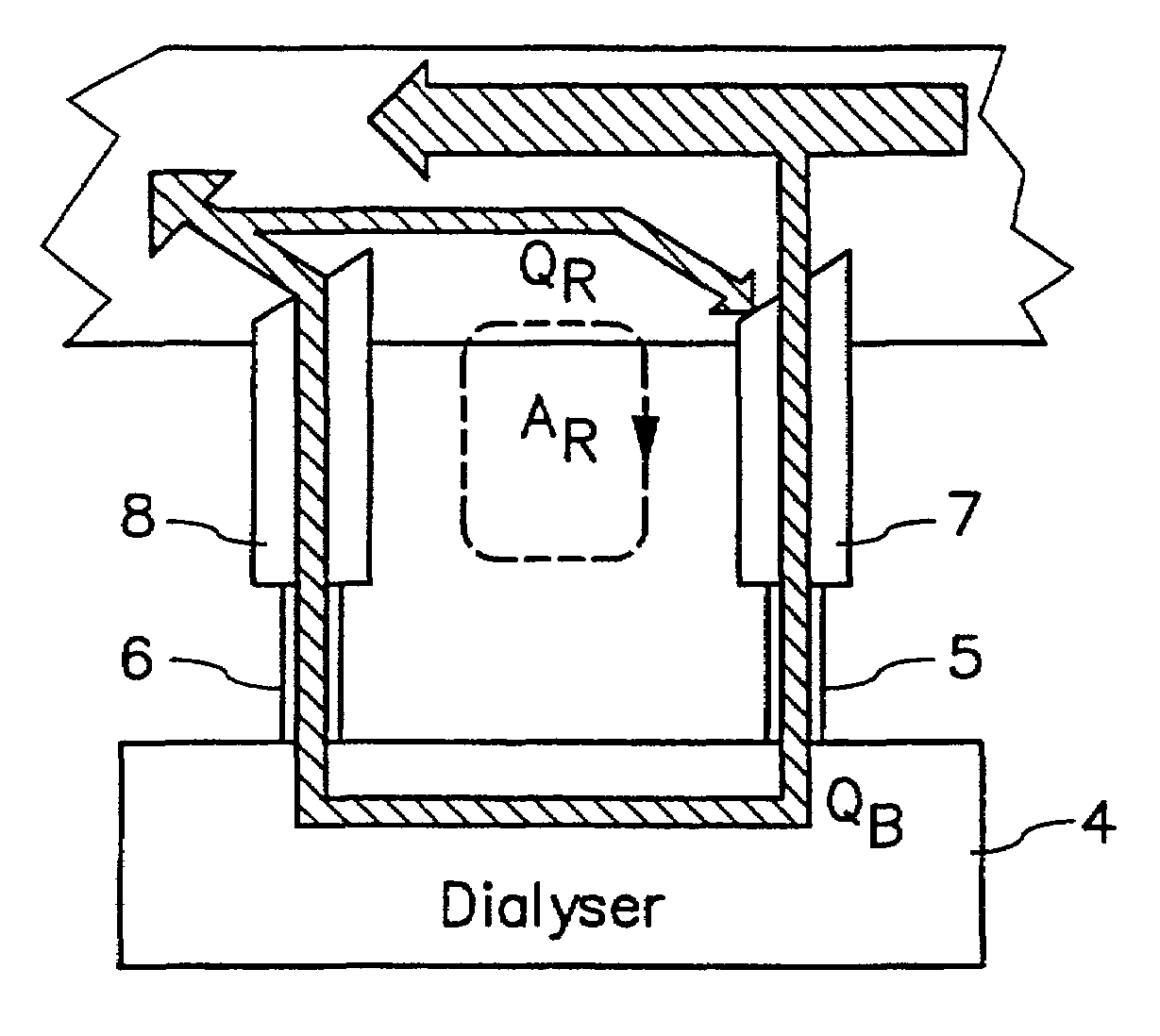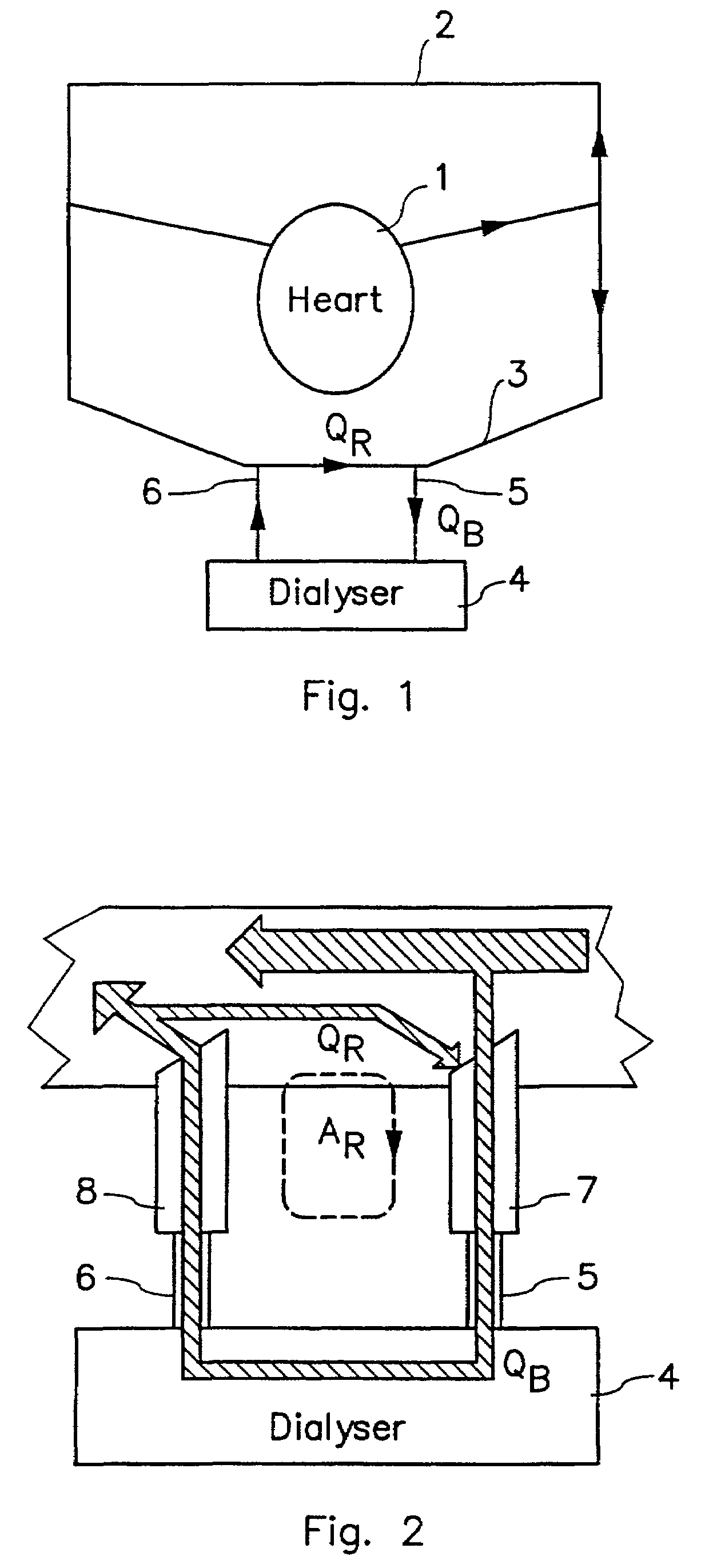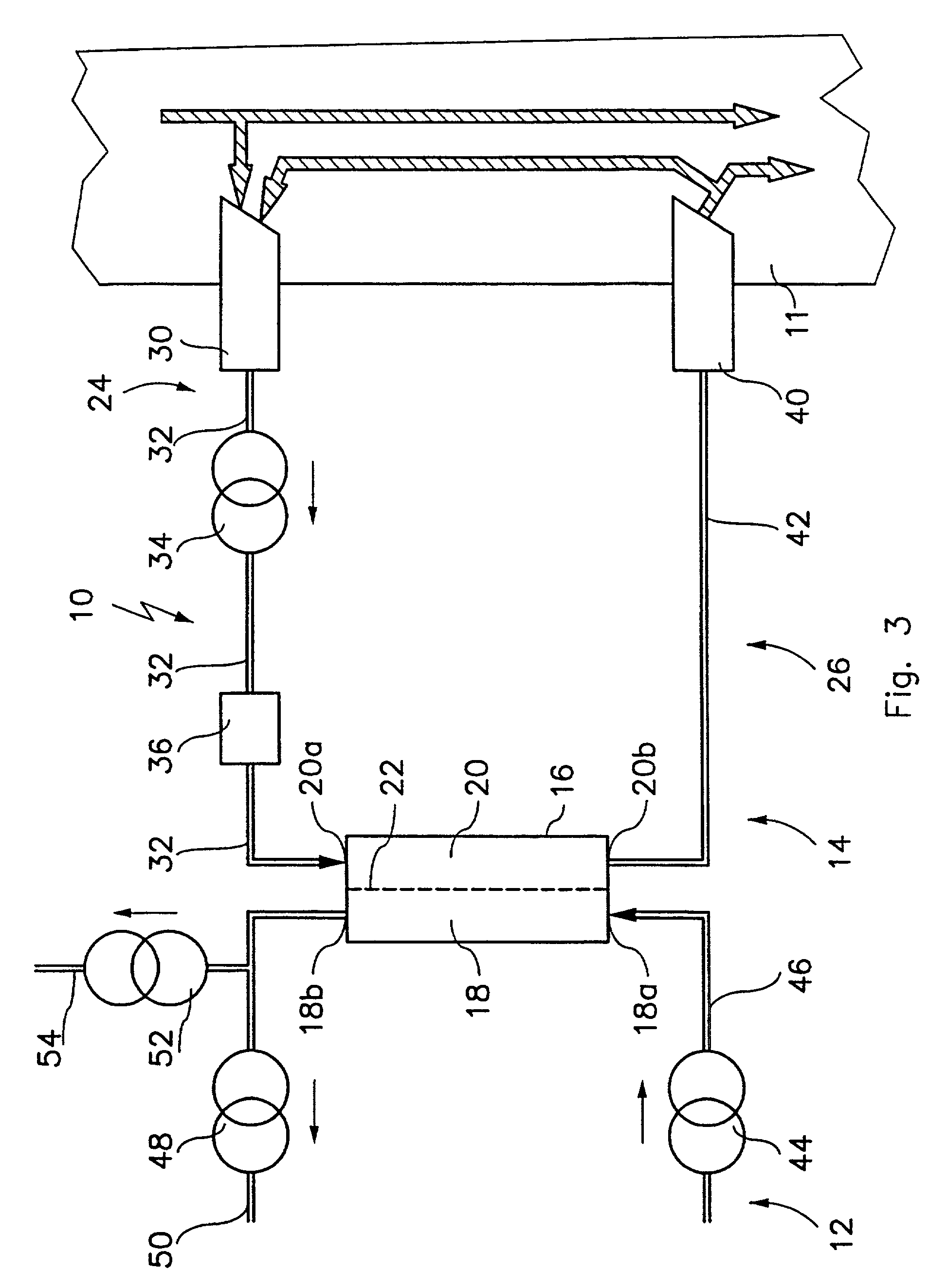Device and a method for determining blood recirculation in a vascular access
- Summary
- Abstract
- Description
- Claims
- Application Information
AI Technical Summary
Benefits of technology
Problems solved by technology
Method used
Image
Examples
Embodiment Construction
[0034]In FIG. 3, the reference numeral 10 indicates a dialysis machine connected to a fistula 11 (vascular access) of a patient undergoing dialysis treatment. In FIG. 3, the dialysis machine 10 is shown in relation to the only parts that are necessary for understanding the device and the method to which the present invention relates, and this diagram also indicates the blood flows in the vascular access.
[0035]The dialysis machine 10 comprises a dialysis solution line 12 through which a dialysis solution passes when in use, and which is made up of a number of sections; a blood line 14 through which the blood of the patient undergoing dialysis treatment passes when in use, it too comprising a number of sections; and a dialysis filter 16 for purifying the blood, connected to the dialysis solution line 12 and to the blood line 14 in the manner described below.
[0036]In particular, the dialysis filter 16 comprises a dialysis liquid compartment 18 inside which the dialysis solution flows w...
PUM
 Login to View More
Login to View More Abstract
Description
Claims
Application Information
 Login to View More
Login to View More - R&D
- Intellectual Property
- Life Sciences
- Materials
- Tech Scout
- Unparalleled Data Quality
- Higher Quality Content
- 60% Fewer Hallucinations
Browse by: Latest US Patents, China's latest patents, Technical Efficacy Thesaurus, Application Domain, Technology Topic, Popular Technical Reports.
© 2025 PatSnap. All rights reserved.Legal|Privacy policy|Modern Slavery Act Transparency Statement|Sitemap|About US| Contact US: help@patsnap.com



